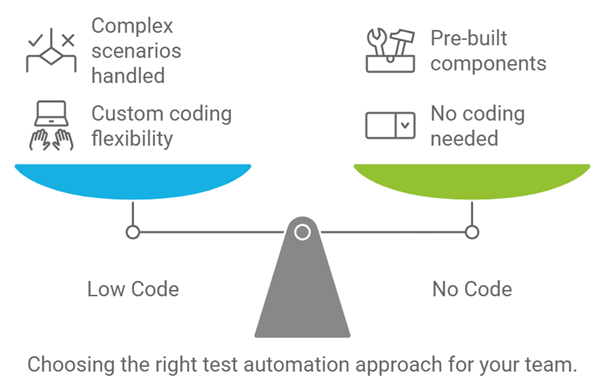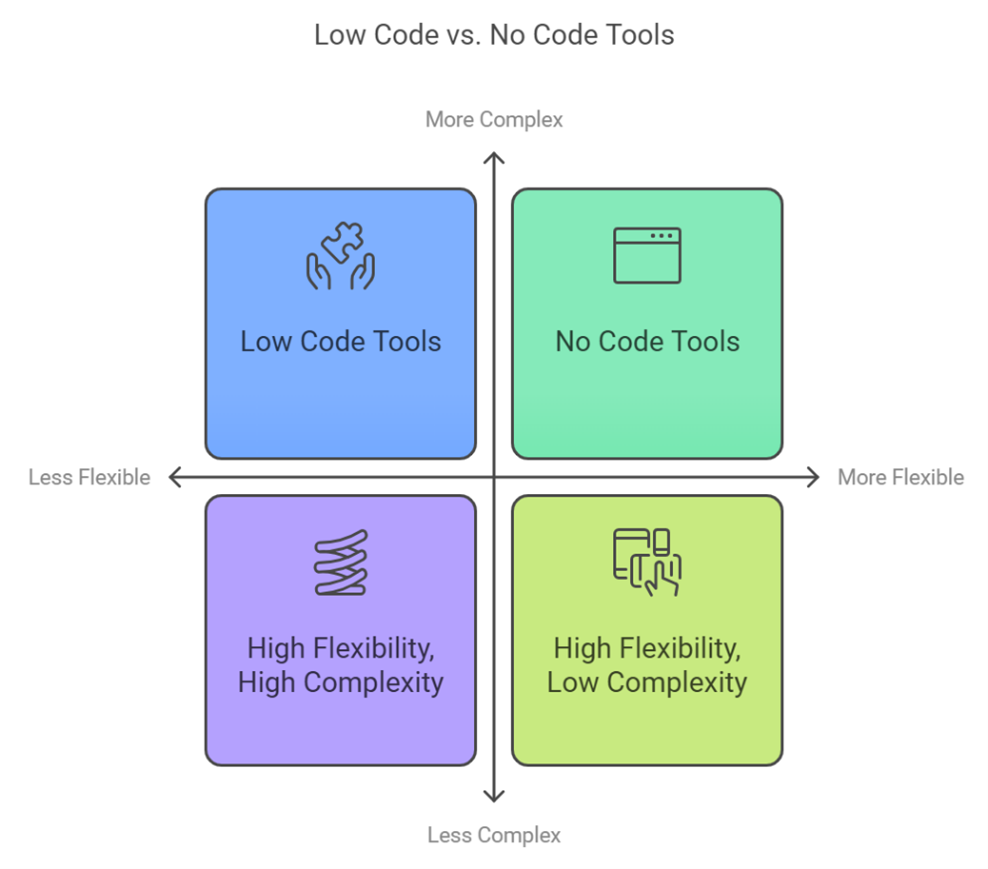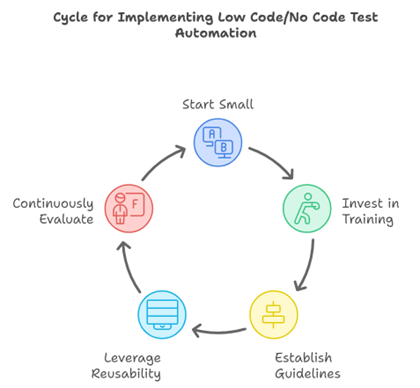
In today’s fast-paced software development landscape, efficient testing is crucial for delivering high-quality applications. Two popular approaches have emerged to streamline the testing process: low code and no code test automation. This article will explore the differences between these methodologies, their benefits, and how to choose the right one for your team.

Understanding Low Code and No Code Test Automation
Low Code Test Automation
Low code test automation platforms, like the one offered by ideyaLabs, provide a balance between visual test creation and the flexibility of custom coding. These tools typically offer:
- Visual test editors for quick test creation
- Record and playback functionality
- Built-in code-like features (loops, conditionals, etc.)
- The ability to insert custom code for complex scenarios
No Code Test Automation
No code test automation tools aim to eliminate the need for coding entirely. They often feature:
- Drag-and-drop interfaces
- Pre-built test components
- Visual test editors
- Record and playback functionality
Key Differences Between Low Code and No Code
While both approaches aim to simplify test automation, there are some crucial distinctions:
- Flexibility: Low code tools offer more flexibility by allowing custom code insertion, whereas no code tools are limited to pre-built components.
- Skill Requirements: No code tools generally require less technical expertise, making them accessible to a broader range of team members.
- Complexity Handling: Low code solutions are better equipped to handle complex testing scenarios that may require custom logic or integrations.
- Learning Curve: No code tools often have a shorter learning curve, allowing teams to start creating tests quickly.

Benefits of Low Code and No Code Test Automation
Both approaches offer significant advantages over traditional coded test automation:
- Faster Test Creation: Visual editors and pre-built components speed up the test authoring process.
- Reduced Maintenance: AI-powered tools can help stabilize tests and reduce maintenance efforts.
- Broader Team Participation: Non-developers can contribute to test creation and maintenance.
- Built-in Reporting: Many tools offer integrated reporting and management features.

Choosing the Right Approach for Your Team
Consider the following factors when deciding between low code and no code test automation:
- Team Skills: Assess your team’s technical expertise and willingness to learn new tools.
- Application Complexity: Evaluate the complexity of your application and testing requirements.
- Scalability Needs: Consider your long-term testing needs and potential for growth.
- Integration Requirements: Determine if you need to integrate with existing tools or systems.
- Budget and Resources: Compare the costs and resource requirements of different solutions.

Best Practices for Implementing Low Code or No Code Test Automation
Regardless of the approach you choose, follow these best practices for successful implementation:
- Start Small: Begin with a pilot project to evaluate the tool’s effectiveness.
- Invest in Training: Ensure your team is properly trained on the chosen platform.
- Establish Guidelines: Create standards for test creation and maintenance.
- Leverage Reusability: Use shared components and groups to minimize duplication.
- Continuously Evaluate: Regularly assess the effectiveness of your chosen approach and adjust as needed.

Conclusion
Both low code and no code test automation offer valuable benefits for modern development teams. By carefully considering your team’s needs and capabilities, you can choose the approach that best aligns with your goals. Whether you opt for the flexibility of low code solutions like ideyaLabs or the simplicity of no code platforms, embracing these modern testing methodologies can significantly enhance your software development process and accelerate your release cycles.